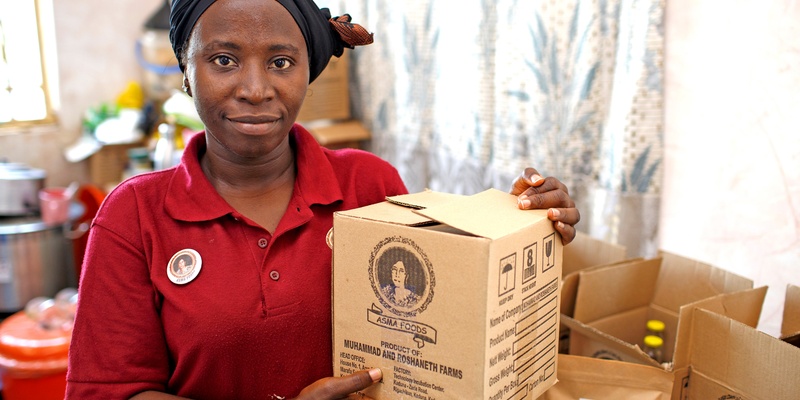Plant health and e-commerce: Countries share knowledge, experiences to protect plant resources and trade
Posted on Tue, 16 Apr 2024, 13:12

© FAO/Misper Apawu
Rome, 16 April 2024. On the margins of the 18th Session of the Commission on Phytosanitary Measures (CPM-18), IPPC contracting parties discussed how e-commerce and the movement of plants and plant products via postal and courier services have become a significant pathway for pest introduction and spread and considered possible strategies to minimize associated risks. E-commerce generates about 5 000 new parcels every second and has transformed buying and selling of goods, including plants.
“The significant growth in the parcel movements has caused unprecedented challenges to phytosanitary export and import systems. Intercepting parcels that contain goods that pose phytosanitary risks or that do not meet the phytosanitary import requirements of the destination country is one of the biggest challenges facing national plant protection organizations (NPPOs)”, said Osama El-Lissy, IPPC Secretary.
He highlighted that managing e-commerce and the postal and courier pathways are priorities of the IPPC Strategic Framework 2020-2030. The IPPC’s Implementation and Capacity Development Committee (IC), in coordination with the Standards Committee, continues to develop practical solutions to addressing e-commerce concerns.
Susan Patnode from the Universal Postal Union (UPU) emphasized the enormous size and complexity of the postal supply chain, with 8.9 billion parcels exchanged annually. UPU sets the rules for international mail exchange and carries out initiatives to ensure the safety of goods moving through postal services. UPU also offers training to national postal operators on emergency planning and risk assessment, provides guidance on how postal services and couriers can prevent and interdict dangerous goods, and conducts communication and awareness-raising campaigns.
Thorwald Geuze, from the NPPO of The Netherlands and IC lead on e-commerce, pointed out some of the challenges of e-commerce: the huge volume of small parcels that may skip normal inspection points, limited information on the content of parcels, anonymity of online sellers, and deliberate misrepresentation and fraud. All these factors pose a threat to plant protection and safe trade through e-commerce. He urged NPPOs to use the vast IPPC resources on e-commerce such as the e-commerce web page, the e-commerce guide: A guide to managing the pest risk posed by goods ordered online and distributed through postal and courier pathways and the infographic video. He encouraged NPPOs to make use of these materials and to share additional phytosanitary technical resources on e-commerce with the global phytosanitary community, to increase understanding and improve collaboration.
Country experiences
In his presentation: “Spread the word, not the pest”, Bruno Gallant from the Canadian Food Inspection Agency (CFIA) reiterated some of the challenges, compounded by customers’ limited awareness of plant protection requirements. To mitigate the pest risk, from 2020 to 2021 (when e-commerce grew due to the COVID-19 pandemic), the Agency conducted an awareness-raising campaign targeting online consumers. The campaign had to deliver messages to make customers “care” and change behavior. CFIA used paid advertising, developed online messages, YouTube videos, social media and website content. The campaign increased visibility about the risk posed by movement of parcels containing plant products, live insects, or snails, in e-commerce. It also increased awareness about the roles and responsibilities of online buyers and sellers.
Using case studies from New Zealand, Peter Thomson from the New Zealand Ministry for Primary Industries presented a tri-factor collaborative approach to managing the pest risk associated with e-commerce: cooperation with e-commerce platforms, cooperation between NPPOs, and cooperation of the public.
On the challenge of overseeing e-commerce, Rosina Leicht from the Argentina National Food Safety and Quality Service, noted that daily screening and monitoring on platforms, marketplaces, and social networks can help mitigate the pest risk, giving NPPOs control of online goods exchange by using real-time data.
Julie Hong-Sakowski from the United States Department of Agriculture (USDA), talked about the challenges of agriculture smuggling and how new technologies have created new pathways for entry of goods, elevating the risk of pest spread. She highlighted the importance of building partnerships with new e-commerce platforms such as third party, social media, and mobile application platforms. USDA was successful in working with some large e-commerce platforms to build internal system filters to prevent US buyers from accessing agricultural materials from foreign origins.
The CPM-18 side session on e-commerce was organized with support from NAPPO, COSAVE and EPPO.
Related information:

